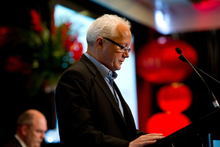Monday Apr 8, 2013

For New Zealand’s businesses, the contrast between our local market and China could not be greater.
For small-medium enterprises (SMEs), China’s challenges might seem insurmountable.
Geographically, China is 36 times bigger than New Zealand, has a population over 300 times the size of ours and has a growth rate that sees the value of its economy double every seven years. Yet when you look closer at the opportunities and challenges presented by China, New Zealand businesses are in a more advantageous position than many from elsewhere.
We have a trade agreement. Our traditional commodity exporters have successfully established trade beachheads in many parts of China that have lifted China into the top three group of our export markets, but they say the market is still immature with considerable opportunity for growth. For New Zealand’s SMEs that has to be good news and a reason to look closely at what China has to offer for doing business.
Though there will always be cultural differences between our countries, a new generation of consumers is emerging in China – they are young, well educated and familiar with non-Chinese cultures. This “Y generation” of 240 million, born between 1980 and 1990, are now the highest-earning age group in China and are looking for a new way of life. They typically live in the major cities in eastern China, in particular in Beijing, Shanghai, Shenzhen and Guangzhou – cities just a plane ride from Auckland.
Each city alone could be a target market whose size and purchasing power is greater than medium-sized countries such as Australia, and of sufficient size to be the focus of an export strategy.
Starting to do business in China requires getting back to business basics – doing research, building up knowledge, making full use of networks and relationships on the ground, selecting a target market and following a focused business plan.
Suggestions for SME Exporters
* Get to know China and where you want to focus. China is not an even market. For example, the social, cultural, and linguistic differences between, say, Guangzhou and Beijing are significant. It is more appropriate to look at China as a number of unique markets under a larger umbrella. Regional diversity, coupled with a good degree of autonomy between the provinces necessitates selecting and knowing your target markets.
* Irrespective of how big or small your business is or what technology, knowledge or investment you bring to China, if you don’t invest in understanding the Chinese culture, at some point you may have to return to “first steps” and start again.
* Make full use of networks and relationships: You are not alone. Hundreds of small companies from all sectors from many countries have launched operations in different cities in China. Some start the journey by way of their local Chamber of Commerce, who link them to chamber offices in Beijing, Shanghai, Shenzhen and most other China cities. Using a major sector trade fair is also a good way to see what other countries are intending to introduce to the China market and can quickly inform new exporters if their pricing and marketing will hit the right target.
* Aim to do it right the first time: Big exporters and multinationals have a wealth of resources available to them, including the ability to withstand failed experiments. SMEs do not.
* Focus research on identifying products or services urgently needed and wanted in China. Hong Kong supermarkets are widely regarded as a trend-setter for the mainland Chinese; consumers look to Hong Kong for trends, not just in what they are eating and drinking but what they do.
Speakers at an “Investing in China” seminar organised by the Auckland Chamber last year, suggested innovative small and medium-sized enterprises should consider looking beyond even the top-tier cities. Consumer spending is rising in many provincial cities, where the population is in the millions rather than the tens of millions. Examples given at the seminar included a fast-food chain that had grown its market share in provincial cities, and despite lacking a presence in the larger cities, had built a successful business with an annual turnover of more than 3 billion yuan (about $570 million).
For fast-footed, innovative SME Kiwi entrepreneurs there are opportunities to be exploited, but they won’t last indefinitely.
Michael Barnett is chief executive of the Auckland Chamber of Commerce. For more information email mbarnett@chamber.co.nz .
